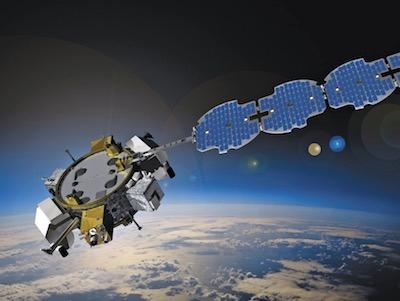Tue, Apr 17, 2018
EAGLE Launched Saturday From Cape Canaveral Air Force Station In Florida
Orbital ATK designed the EAGLE (ESPA Augmented Geostationary Laboratory Experiment) experimental satellite for the U.S. Air Force’s AFSPC-11 mission that successfully launched on United Launch Alliance’s Atlas V vehicle April 14 from Cape Canaveral Air Force Station, Florida. The AFSCPC-11 mission included a second company designed satellite, Mycroft, which is among several Department of Defense experiments hosted on the EAGLE platform as separate payloads.

The EAGLE and Mycroft satellites are based on the company’s ESPAStar™ and ESPASat™ products, which provide modular, cost-effective and highly capable infrastructure resources for hosting technology development and operational payloads. The Orbital ATK-designed EAGLE satellite is the first spacecraft based on the company’s innovative ESPAStar platform. The ESPAStar vehicle can accommodate any combination of up to six hosted or 12 separable, free-flyer payloads in low and geosynchronous orbit and is built to provide an even greater level of access to space. Orbital ATK designed and delivered the EAGLE satellite under a contract with the U.S. Air Force Research Laboratory (AFRL) Space Vehicles Directorate.
After a successful separation from the launch vehicle, EAGLE is hosting several Department of Defense payloads, including Mycroft, the second Orbital ATK-designed satellite to be deployed on the mission. Mycroft, a separable, fly-away experiment, utilized the company’s ESPASat platform for its flight. ESPASat is designed as an affordable GEO bus that can be launched as a secondary payload from an ESPAStar platform.
“Orbital ATK is proud to partner with the U.S. Air Force on the EAGLE and Mycroft missions,” said Chris Long, Vice President, National Security Systems at Orbital ATK. “Our unique capabilities to host separating and non-separating payloads represent a turning point in affordable access to space for small satellites and payloads.”
(Image provided with Orbital ATK news release)
More News
Airport Marking Aids Markings used on runway and taxiway surfaces to identify a specific runway, a runway threshold, a centerline, a hold line, etc. A runway should be marked in ac>[...]
"It is extremely difficult, if not impossible, for manned aircraft to see a drone while conducting crop-enhancing and other aerial applications at low altitudes and high speeds. We>[...]
Aero Linx: The Skyhawk Association The Skyhawk Association is a non-profit organization founded by former Skyhawk Pilots which is open to anyone with an affinity for the A-4 Skyhaw>[...]
“The T-54A benefits from an active Beechcraft King Air assembly line in Wichita, Kansas, where all required METS avionics and interior modifications are installed on the line>[...]
Aero Linx: Aerostar Owners Association The Association offers the Aerostar Owner a unique opportunity to tap an invaluable source of information concerning the care and feeding of >[...]
 ANN's Daily Aero-Term (04.28.24): Airport Marking Aids
ANN's Daily Aero-Term (04.28.24): Airport Marking Aids Aero-News: Quote of the Day (04.28.24)
Aero-News: Quote of the Day (04.28.24) ANN's Daily Aero-Linx (04.28.24)
ANN's Daily Aero-Linx (04.28.24) Aero-News: Quote of the Day (04.29.24)
Aero-News: Quote of the Day (04.29.24) ANN's Daily Aero-Linx (04.29.24)
ANN's Daily Aero-Linx (04.29.24)



